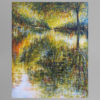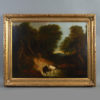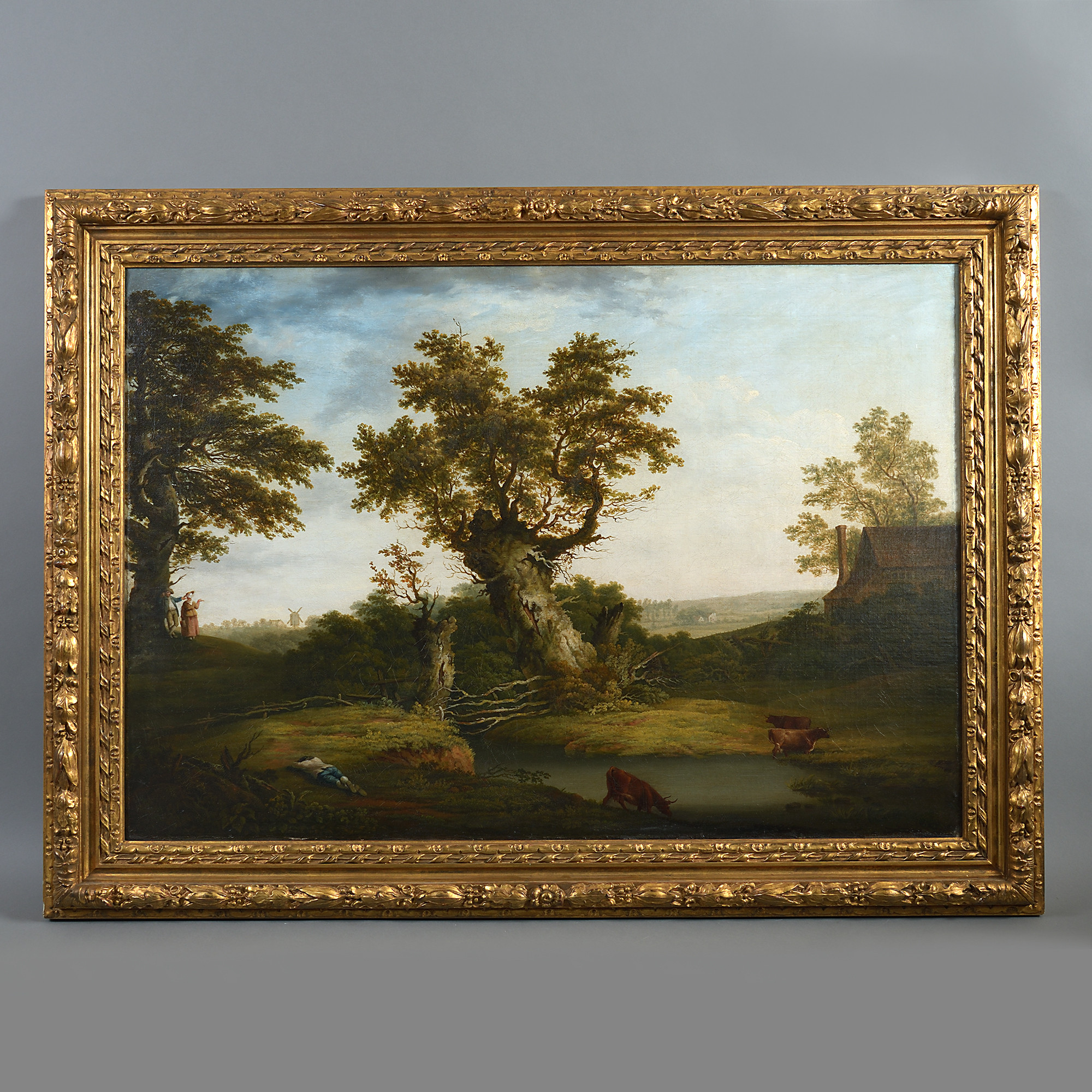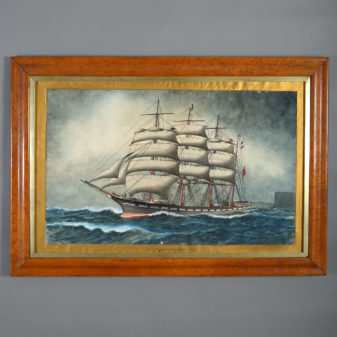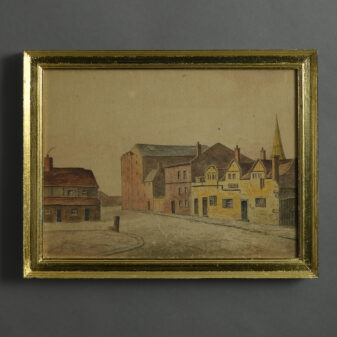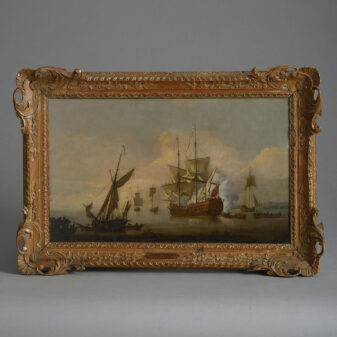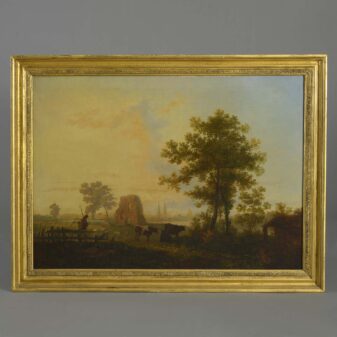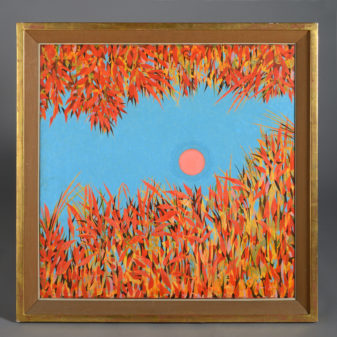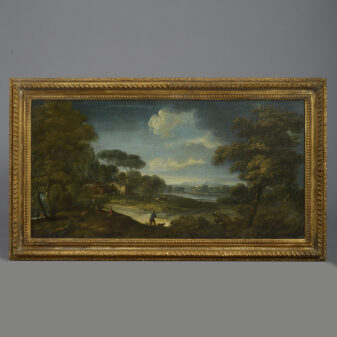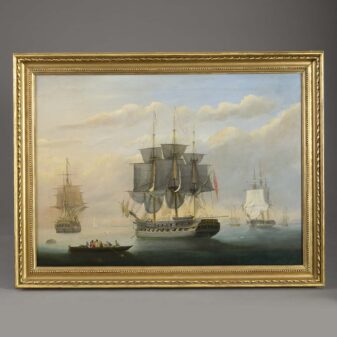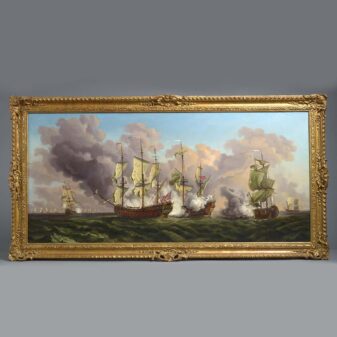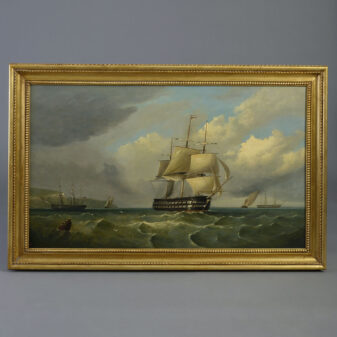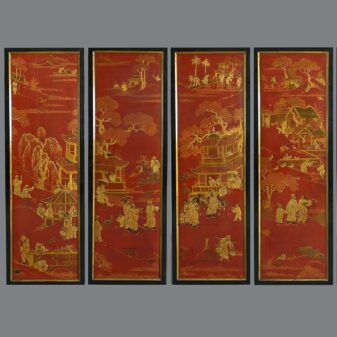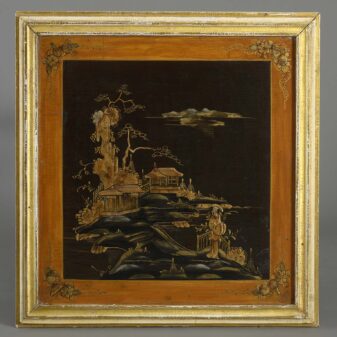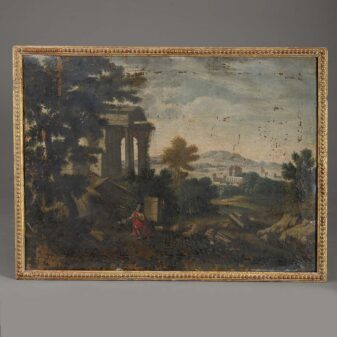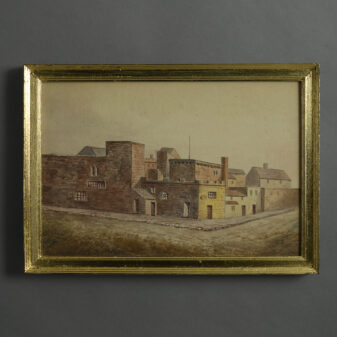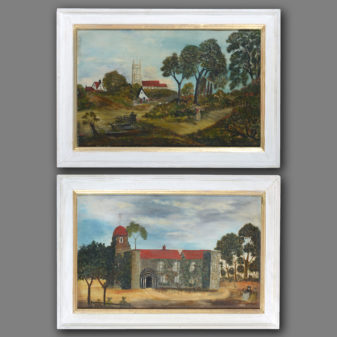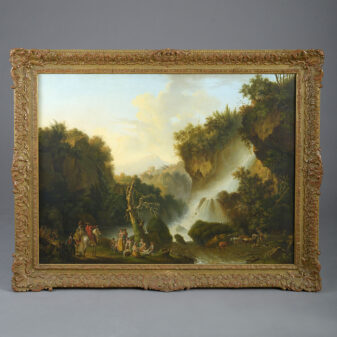James Lambert of Lewes – A Rest for the Cow Herd
£7,900
SOLD
Dimensions refer to size of frame
Oil on Canvas in carved giltwood frame
Born in December 1725 in Eastbourne, James Lambert was a teacher of both music and painting and a celebrated portrait and landscape artist in his own time. The name James Lambert is the same as the artists’ father and thus the junior Lambert became known as ‘Lambert of Lewes’ after his hometown. Lambert’s work is much in the manner of the Smith brothers of Chichester, who were also acclaimed landscape artists of the day. Lambert’s paintings captured scenes of the English countryside, portraying inland Sussex close to his home in Lewes and on one occasion ventured to Devon to portray the local landscape in 1762. Under the employ of enthusiastic English agriculturalists as a professional portraitist; many of Lambert’s paintings include cattle and sheep grazing in the quintessential English countryside, so adored by Lambert. Within the oeuvre of the artists’ works, there is a further inspiration beyond an evident love of the English countryside towards a classical influence with Italian turrets and crags present in his work akin to those found in capriccios of the time.
Though much of James Lambert of Lewes’ life and works involve the countryside – he was married in April 1760 to Mary Winton – his works enjoyed public display and celebration in the galleries of London, with over 50 of his works having been displayed at the Royal Academy, the Free Society of Artists and the Incorporated Society of Artists collectively. Such celebration of Lambert’s work continues beyond his death on 7th December 1788 to the present day with much of the artists’ work being currently displayed at the National Gallery and the Victoria & Albert Museum in London. Further, as a symbol of the reciprocated fascination and continued affiliation of Lambert to his namesake hometown of Lewes, there is Lambert’s self-portrait on display at the Archaeological Museum in Lewes, the town of Lambert’s lifelong residence, the subject of his artworks and the location of his permanent resting place.

